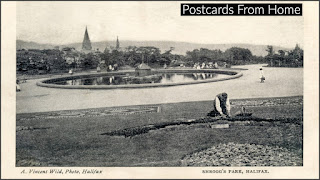A HISTORY OF MY FAMILY IN 100 IMAGES
These two photographs are central to the story of my family because they feature my paternal grandfather, Enoch Burnett. Enoch died a few months after I was born in 1948, and therefore I never knew him, other than by the store of stories and anecdotes that have flowed down the family tree like some rich and thick syrup.
Born in Bradford in 1878, Enoch was the third of five children of John Burnett, a weaving overlooker in the Bradford woollen mills, and his wife Phoebe. Whilst the daughters, Ruth-Annie and Miriam, followed their father into the mills, the three sons seem to have had a different life journey planned for them. Israel, the eldest son, became an apprentice butcher and later owned a butchers shop in Bradford. The youngest son, Albert, became a carriage builder and involved in the early years of the motor trade. Enoch seemed to take a different path, one less planned, one less certain. The family story suggests that when he was in his early teens he ran away from home and joined a travelling fair. By the latter half of 1898, we know he is back in Bradford and working as a general labourer, and about to marry the local girl he has got pregnant, Harriet Ellen Maxfield. His first child, John Arthur, was born six months later.
According to the 1901 census he was recorded as a "mason's labourer", but with a growing family - his daughters Miriam and Annie-Elizabeth were born in 1901 and 1903 - he decided to branch out into business on his own account as a window cleaning contractor. For this he had a donkey and cart, and I am delighted that I have not one, but two, photographs from this period in his life where he poses proudly next to his donkey.
I think the first of the two photographs is the earlier one, and whilst the donkey is probably the same, the cart is more basic and without the extra bit of sign writing that provides an address - 50 Town End Great Horton, Bradford. According to the 1911 census he was then living at 28 Town End, so this first photograph probably dates from some time between 1906 (when the sign on the later cart claims the business was established) and 1917, when we know for certain that he had moved to 50 Town End.

The additional sign writing on the cart in the second photograph was probably added at the time he changed his address, and therefore this second photograph probably dates from just before or during the first part of the Great War. I have pictures of him taken in 1918 when he was on leave from the trenches of Flanders, and by then he had physically aged. These two photographs represent a golden period in Enoch's life, when he ran his own business and tried to keep the local windows free from the soot and grime of industrial Bradford.
























































